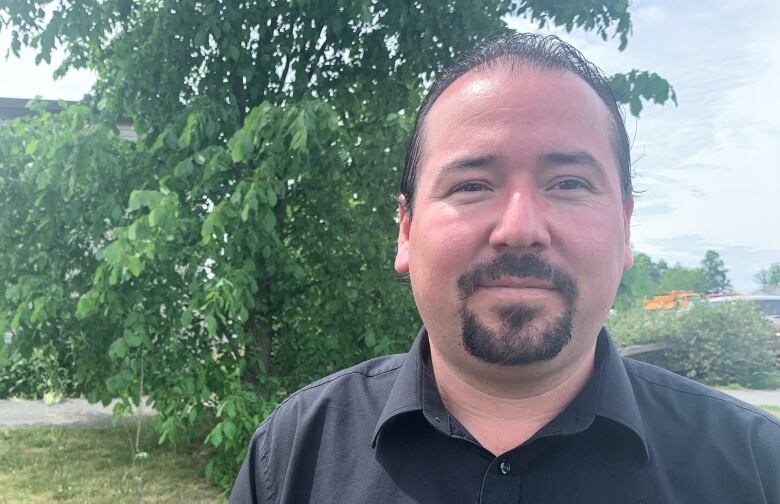Indigenous community navigated COVID-19 while crossing borders
Akwesasne residents could travel 160 kilometres from their home and cross the border freely

Travel restrictions have never stopped Colleen Lazore from crossing the Canada-U.S. border to see her children in St. Regis, N.Y.
In factthe mother of four, who lives on Cornwall Island, Ont., has been moving freely across the St. Lawrence River throughout the COVID-19 pandemic.
"There's no way you're going to tell me that I can't go and see my children, especially during this time," said Lazore.
"That's our land, we can go over there. We didn't put those borders up," added Bronson Leaf,Lazore's partner.
They are among 23,000 members of the Mohawk Nation at Akwesasnewho are considered dual citizens of both Canada and the U.S., and are allowed under treaty rights to travel between the two countries during the pandemic.
The community is also unique in that it straddles three health jurisdictions and two countries. Most of Akwesasne sits within the province of Quebec, with territory sprawling over upper New York state and the southeastern edge of Ontario.
Early in the pandemic, the Canadian government andthe Mohawk Council of Akwesasneagreedthe Mohawk people would be exempt from border restrictions.But those freedoms came with conditions.
Akwesasne residents couldn't travel more than 160 kilometres from their home. And if they did, they needed to follow a two-week quarantine.
Untiljust a few weeks ago, non-residents were mostly banned from the territory. Only essential workers were allowed in.

Spirit of community
Abram Benedict, Grand Chief for the Mohawk Council of Akwesasne, admitted there have been challenges trying tokeep residents safe and maintainorder within what appears to be an international bubble.
At timeshe said people on the American side displayed a more care-free attitude than those on the Canadian side.It took a combination of community co-operation and careful governance to keep COVID cases at bay.
"Our people have a natural reaction to help one another [they have] come together as a community and support one another," said Benedict.
The leadership received guidance from the Eastern Ontario Health Unit, which has allowed the community to enact its own rules.
At times a curfewlimited non-essential movements between 11 p.m. and 5 a.m., and mandating the use of masks even as restrictions eased in New York and elsewhere.
Benedict said he knew the health edicts had to come from the council, and community members agreed.
"I would take it more [seriously] if my own band councillor had told us," said Bronson Leaf, who's Lazore's partner.
Rosemary Square, who lives on Cornwall Island, said it often fell on her shoulders to relay accurate information from the Mohawk Council to her elderly parents, who have access to American network news.
"Ontario was more strict and I found that the United States was more laid back," she said.
"I don't think the people [there] really took it seriously."
Since the start of the pandemic, the northern region of Akwesasne has recorded a total of 358 COVID cases and seven deaths, while the American side has seen 339 cases and three deaths. This translates to about 3,000 cumulative cases per 100,000 people a ratio that's comparable to Ottawa.
"The cases that we've had, including the variants, were not generally local," said Benedict. "They were brought from outside of the community."

Amplified racism toward Mohawk people
Several racist incidents have occurred during the pandemic due to alack of understanding from the outside community about the rights of the Mohawk people to travel freely, according to Benedict.
In some instanceshe said notes were left on cars, or offensive comments were yelled at drivers with New York or Quebec licence plates while visiting Cornwall.
Colleen Lazore said she also experienced problems and delays from border agents. During a trip back from the U.S., Lazore and her sister were pulled over and searched.
"It's just simple little everyday shit, micro-aggressions and they build up," she said. "Where there's pain, there's strength, and it's embedded in our DNA."

Benedict says with the potential spread of new variants, he wonders if outsiders will take the safety of Mohawk people into consideration once the Canada-U.S. border fully reopens.
He remains hopeful and knowsthe local economy needs more travel to resume.
"The last year has just reaffirmed that we're a resilient community and that regardless of some external challenges or border or geographical jurisdictional challenges."












_(720p).jpg)


 OFFICIAL HD MUSIC VIDEO.jpg)
.jpg)



























































































